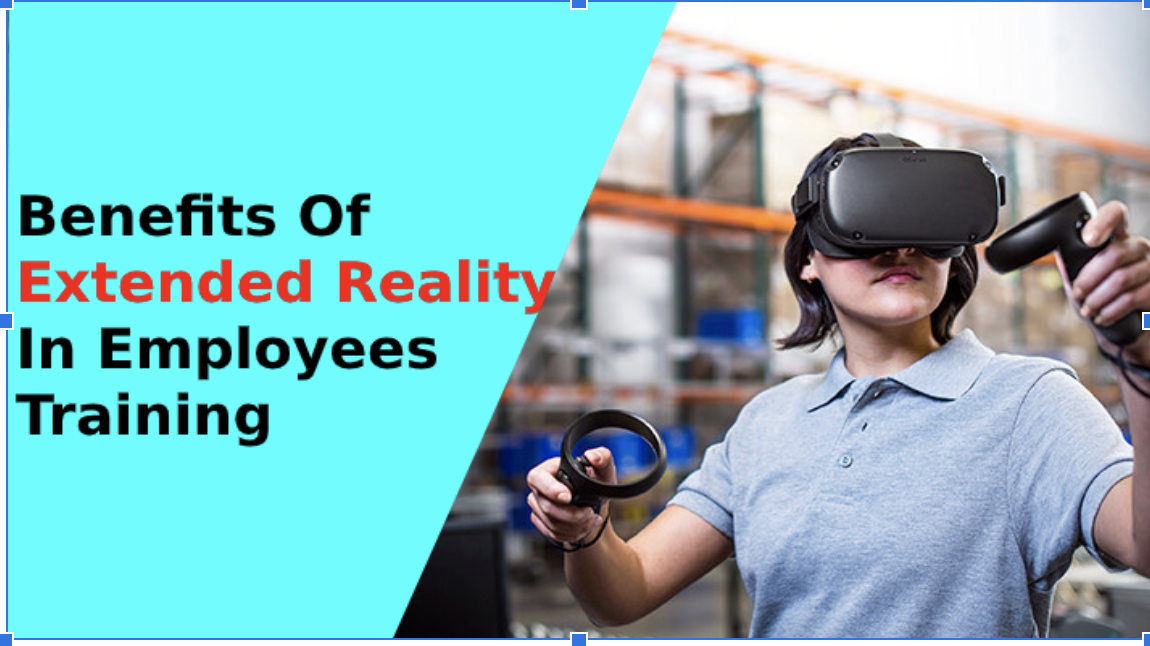Technologies have become an integral part of human lives in today’s world. With the advent of immersive technologies like Virtual, Augmented, Mixed and Extended Reality our lives have become more comfortable and easy. In fact, these technologies have not only brought the world closer but have also blended the virtual and physical environment for more reciprocal communication.
Among the latest technologies mentioned, we will mainly talk about the extended reality, the latest addition to the list. Before going into the details let us first understand what is XR or extended reality.
Meaning nature and scope of XR
Extended Reality implies that realm of technology which combines all the virtual and real environments along with human-machine interactions created by wearables and computer technology. If we go by percentage, then XR includes 38 percent of Virtual Reality, 26 percent of Mixed Reality and 36 percent of Augmented Reality. Thus the use of XR will help you to utilise the advantages of all the three immersive technologies in a comprehensive depending on the scope of business.
If you wish to impact your business using XR, it would be wise to find out the top extended reality companies who can offer you with customised solutions.
Influence of XR for businesses:
Couple of industries have already tasted success by using XR in their business models. Market research experts think that the market size of XR will be more than 209 billion USD in 2022 from 27 billion USD in 2018. This shows the vast horizon which can be met with XR if used appropriately.
The potential for XR across industries can be better understood from the following discussion.
Entertainment: The different forms of entertainment create a visual impression which we all love to witness. It makes us relieved and relaxed from the stress and tension of our professional lives. What better can you expect other than using XR to experience live performance or any other forms of dance, music, theatre etc. Wearing a VR headset you can even play your favourite sport from any parts of the world.
Marketing: Traditional or conventional marketing consumes a lot of time compared to the digital methods of today. The different types of marketing initiatives can be better executed using XR technology. It helps in streamlining the business processes so that the targeted customers can be well served with utmost ease and efficiency.
Training: Training is an important aspect which helps an organization to improve its efficiency so that it can attain a competitive status. But definitely, training involves huge time and money along with travelling in cases where office locations are in remote places. To reduce all these hassles XR or extended reality through which companies can experience collaborative discussion, meetings training without the need to travel far off areas or hire an external trainer for the purpose. It will also help in reducing the company’s expenses and minimising the need for a vast period.
Real Estate: Using XR the property managers can streamline the rental process and enable potential tenants view their dream properties virtually. Also, they can make the designs and other architectural aspects lively so that the clients can be attracted and the desired properties can be sold.
Remote working: Collaborating with workers from distant areas is indeed a huge problem for companies these days. But with XR you can easily remove the distance barriers as employees can easily access data and vital information from anywhere across the globe.
Business communication: This is another vital segment which has been tremendously influenced by the use of the latest technologies. Proper communication is necessary to ensure smooth flow of information. Transparent communication from the employers to the employees helps in streamlining the task areas along with generating fresh ideas to create trends.
Using the potentialities of XR, companies can easily communicate with their various branches located in different parts of the world. For example, XR can be used by enterprises before launching any products as the team members can hold discussions with others who are associated with this task but are located in far off places. The product features and its look and presence can be talked about in details with all concerned so that the targeted audience can be well served.
Now considering all these benefits of XR for diverse ranges of business it becomes highly imperative that this technology also has a pivotal role in imparting effective training for the employees.
XR for employee training
There are already instances where extended reality technology has been used to ensure digital transformation of the employees concerning industries like aerospace, manufacturing, healthcare etc. Experts think that extended reality has got much more prospects to go further than the heavy industries like the ones mentioned and can also equally benefit sectors such as tourism, retail, real estate and lots more.
XR is mainly applied for employee training to simulate the physical working environment.
Some of its advantages in this regard are as follows:
Enhanced visual impression: Learning becomes all the more effective once the learners can see the content in front of them. Using XR, the employees as learners can have a better understanding of the objects, concepts and processes as they can see and experience what they are learning. For instance, a Mixed Reality application can be used to illustrate the training of human anatomy so that the working and the layers of the organs can be known in details for a clear and thorough understanding.
Collaboration and remote learning: Here also, the XR technologies help in lowering the geographic distances between the trainees and the trainers. It facilitates trainers to teleport into the same room as trainees and can then guide them accordingly to achieve the desired aims and objectives. As it will help in experiencing a real presence, training communication is bound to become highly effective and engaging.
Accessibility: Safe training environments can be created using XR technology, which enables the trainees to learn from their mistakes without causing any actual harm. In this way, the companies can curtail their expenses on investments for training purposes. For example, technicians can be trained with VR techniques to repair aircraft without causing any real-time damages or injuries.
Learners can remain focused: The trainees need to remain focused on their objectives so that they can pick up the required skills and knowledge fast. XR can utilise its VR potential to isolate trainees from the distractions of the real world. Thus it facilitates the employees to pay more attention so that learning can be done at a fast pace. It further helps in making the training procedures more efficient to meet the organizational aims and objectives.
Knowledge retention and high engagement: Both these are regarded as the two sides of the same coin. The immersive elements of XR are capable to make learning an engaging and an enjoyable experience for the employees. Game elements can be introduced through the process of gamification so that the workers can learn their tasks interactively and excitingly. As a result, they will feel encouraged to take up challenging and strategic roles that can give an edge to their brand in today’s competitive world. For example, technicians can earn achievement points by connecting and launching virtual machines correctly. As XR facilitates in learning by doing, employees can absorb new and updated information pretty fast.
Advanced analytics: Improved sensors are used in XR technology to collect data and metrics which include gesture, heat maps, behavioural data, voice recognition and eye-tracking. These attributes benefit companies to improve and evaluate their training programs to measure the gap between the desired and the actual performance. Pupil dilation is one such technique of XR which helps in learner engagement.
Customised content: Based on the nature and scope of the business training module needs to be created. Now, this can be easily done using XR which is beneficial as companies can design their programs considering specific concerns and key responsibility areas. Moreover, customised training modules help in emphasizing on those areas which are pivotal in determining the brand loyalty along with retaining the existing customers and attracting the potential ones.
Extended Reality companies contribute a lot to enrich and complement employee training initiatives to enhance business productivity and revenue. By enhancing the visual impression of the training materials, immersive technology like XR can help in retaining knowledge for long. Employees receiving training through XR can also learn from their mistakes as they can avail multiple opportunities to make the process right and appropriate without causing any real harm.
Conclusion: Extended Reality technology like any other immersive technologies has both business and consumer benefits. But what makes it distinctive from the rest is its ability to deliver three types of advantages under one roof-AR, VR and MR. Business enterprises are always looking for advanced ways to uplift their business processes. Before the advent of XR, companies either used to look for AR, VR or MR separately as solutions based on their needs. But with the use of extended reality, companies can now reap the advantages of all the three technologies clubbed together. Thus both time and money can be saved in a single investment.
Author Bio: Mr Arup Roy is the CEO of Red Apple Technologies, one of the popular extended reality companies in the world. Being a tech enthusiast he takes a keen interest to work with innovative technologies so that business solutions can be made more interactive for the customers to engage them for long.

